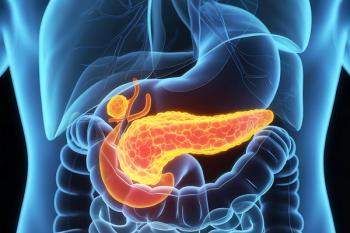
- The Application Notebook-03-01-2019
- Volume 36
- Issue 3
Identifying Long-Chain and Short-Chain Branching in Polymers
Branching affects macroscopic polymer properties such as crystallinity, melting temperature, toughness, ductility, and optical clarity. Two types of branching are long-chain branching (LCB) and short-chain branching (SCB), wherein the molar mass of the branches is larger or smaller than the entanglement molar mass, respectively.
Branching affects macroscopic polymer properties such as crystallinity, melting temperature, toughness, ductility, and optical clarity. Two types of branching are long-chain branching (LCB) and short-chain branching (SCB), wherein the molar mass of the branches is larger or smaller than the entanglement molar mass, respectively.
Size-exclusion chromatography with multi-angle light scattering (SEC-MALS) characterizes LCB in macromolecules through conformation plots: log-log plots of the rms radius (radius of gyration, Rg) versus molar mass (M). These plots have a characteristic slope of 0.58 for a linear polymer in a thermodynamically good solvent. Polymers with LCB exhibit a lower slope than the linear analogue. The difference in slope between a linear polymer and a branched polymer can be seen in Figure 1.
SCB does not produce such obvious differences relative to linear analogues. The following analysis of branched silicones reveals the telltale characteristics of polymers with SCB.
Materials and Methods
Three separate lots of branched silicone polymers were dissolved in THF for analysis. The instrument setup consisted of an Agilent 1100 HPLC with two PLgel Mixed-C 300 × 7.5 mm columns combined with a DAWN® MALS detector and an Optilab® differential refractometer. Data acquisition and analysis were performed using ASTRA® software.
Discussion
SCB creates a dense structure with smaller radii than linear polymers of the same molecular weight. However, their overall conformation remains similar to the linear analogue. As a result, measurements of two polymers, one with and one without SCB, produce parallel conformation plots. This phenomenon has been seen in previous studies of branched polyethylene polymers and poly(p-methylstyrene) comb polymers (1–3).
Polymers may possess both SCB and LCB. In these cases, the branched polymer conformation slope is lower than that of the linear analogue, and the plot is shifted down in size. This is seen in Figure 2, where silicone polymers with a fixed amount of LCB and increasing amounts of SCB have slopes lower than 0.58 in the conformation plot. As the amount of SCB increases, the intrinsic viscosity [η] at a given molar mass decreases, while the slopes remain parallel.
Conclusions
Light scattering implemented as SEC-MALS can effectively and rapidly characterize branching in polymers. Polymers with LCB exhibit lower slopes than the corresponding linear polymer, which differ depending on the extent of LCB. Polymers containing only SCB exhibit conformation plots parallel to those of their linear analogues, shifted down in Rg.
If polymers possess both SCB and LCB, then their slopes will be less than the linear analogue slope, and the plot will be shifted down relative to non-SCB analogues. Hence SEC-MALS is an essential tool for analyzing such polymers. For smaller polymers with radii below 10 nm, a differential viscometer such as a ViscoStar is added to the system to plot the logs of intrinsic viscosity, rather than radius, versus molar mass.
References
- Y. Yu, P.J. Deslauriers, and D.C. Rohlfing, Polymer46(14), 5165–5182 (2005).
- T. Sun et al., Macromolecules34, 6812–6820 (2001).
- W. Radke and A.H.E. Müller, Macromolecules38, 3949–3960 (2005).
Wyatt Technology Corp.
6330 Hollister Avenue, Santa Barbara, California 93117, USA
Tel.: +1 (805) 681 9009 Fax: +1 (805) 681 0123
Website:
Articles in this issue
almost 7 years ago
Add More Confidence to Your UHPLC–MS Analysisalmost 7 years ago
Assessing Antibody ADCC Activity by Affinity HPLCalmost 7 years ago
Reversed-Phase Analyses of Monoclonal Antibodies Using High TemperaturesNewsletter
Join the global community of analytical scientists who trust LCGC for insights on the latest techniques, trends, and expert solutions in chromatography.





